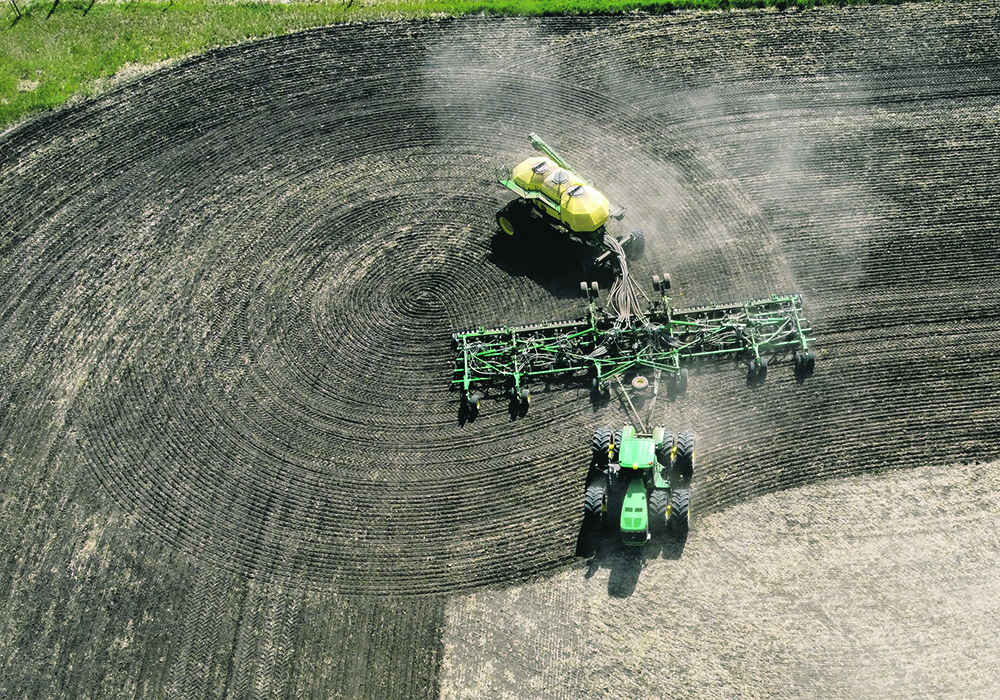Despite very dry conditions in some areas, producers consider the large investment in spring crop a serious issue
Alberta has been largely spared the deluge of precipitation that has hit Manitoba and parts of Saskatchewan this spring.
Now, an early June heavy rain across the southern part of the province has provided relief to areas experiencing deteriorating moisture conditions.
Most major crops in southern and central Alberta were reporting as more than half seeded in the middle of May with nearly all fully complete by the end of the month.
A wet and cold spring in Peace country and northern half of the province slowed seeding, which picked up at the end of the month. Spring wheat seeding is nearly complete and canola is more than three-quarters done.
Read Also

Gene editing digs deeper space in Canadian plant breeding
More Canadian research into crop variety development is incorporating gene editing, and one researcher notes that Canada’s regulatory approach to gene editing will help drive innovation
But in the south and central regions, dry conditions have growers on edge coming off of last year’s devastating drought.
“We’re desperate for moisture along and south of the Trans-Canada Highway,” said Tom Steve, Alberta Wheat Commission general manager. “It’s a serious situation and equalling 2021.”
Speaking before those areas saw 50 millimetres of rain or more in some areas, Steve said if precipitation doesn’t come soon, “there is going to be a lot of hurt out there.”
That hurt is likely being alleviated by more than 30 millimetres of rain falling during the June 4 weekend across much of southern Alberta, compared with between 30 and 50 mm over the three previous months.
The situation in central Alberta and northern Alberta is better but both areas could use more moisture, he added.
“I’ve spoken to some of my directors up in the Peace River region and they are saying we’re still not in an excess moisture situation and we’re going to need timely rains to get this crop to maturity and harvested.”
Karla Bergstrom said canola seeding should be complete province-wide by the end of the first week of June with the exception of some fields in the Peace country.
“Farms around Manning are likely the furthest behind but guys are going hard to try to catch up and hopefully they can wrap up within a week,” she said.
In the southern part of the province, recent rain will likely alleviate the pressure that was threatening some canola crops.
Like with wheat, the central part of the province was coming into June with descent moisture for canola with the northern part having adequate conditions.
The stakes are high this year, according to Bergstrom. “This is going to be the most expensive crop producers have ever had to put in the ground.”
Supply chain issues, the Russian invasion of Ukraine, availability and cost of fertilizer along with rising energy costs are contributing factors to this year’s rising input costs.
On the other side of the equation when it comes to canola, “we’ve never seen prices like this,” said Bergstrom.
It’s much the same on the wheat side said Steve.
“Most farmers are more focused on the cost of growing this crop — whether it’s wheat, barley, canola, pulses — and what their potential return is going to be,” he said. “Definitely, this is the most expensive crop that farmers in Western Canada have ever grown in their entire career.”
The chances of success this year will depend on the amount of rain, he added.
Steve and Bergstrom said they will be looking to government to refine programs that will take into account either excessive moisture or drought conditions this year along with the sharp rise in costs to plant a crop.
















